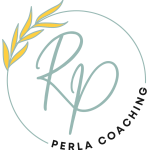Are you a disruptor, or an innovator? 
Does it matter?
Well, consider this: Disruption changes how we think, behave, do business, learn, and live life. Disruptive innovation displaces an existing market, industry, or technology, and produces something new, more efficient, and worthwhile. While disruptors are innovators, not all innovators are disruptors.
Researcher, professor, and author Clayton Christiansen described disruptive innovation as a corporate effort to redefine quality, adopt new technologies, and anticipate customers’ future needs. To put it simply, instead of trying to best their competitors, disruptors change the game.
The Paradox
In The Innovator’s Dilemma: When New Technologies Cause Great Firms to Fail (Harvard Business Review Press, 2016), Christiansen shares his research on success sustainability, and the great paradox of two principles taught in business schools: that you should always listen to and respond to the needs of your best customers, and that you should focus on investments of those innovations that promise the highest returns. But according to Christianson, these two principles “sow the seeds of every successful company’s ultimate demise.”
Most sustaining technologies foster improved product performance; they are discontinuous, radical, or incremental, explains Christiansen. Disruptive technologies result in worse product performance—at least in the near-term; they underperform established products in mainstream markets. But, they have other features that a few fringe (and generally new) customers value.
Disruption Fatigue
Are we burned-out on the hype?
When I think of the word “disruptive,” it evokes memories of school children unable to self-soothe or stabilize their own feelings; passionate entrepreneurs sharing their vision; and bosses who are feeling the pressure from their bosses or shareholders.
What about you?
In an interview with The Guardian, Georgia Institute of Technology Professor Ian Bogost told Leigh Alexander that “The big difference between even disruptive innovation and plain disruption is that the former was focused on some improvement to a product or service or sector or community, while the latter is looking first at what it can destroy. Everything is fire and brimstone.”
When Christiansen first used the phrase “disruptive innovation” it evoked possibility, excitement, and hope. Today it signals uncertainty and change. Leadership in the time of disruption requires that leaders address fear, before it takes hold.

